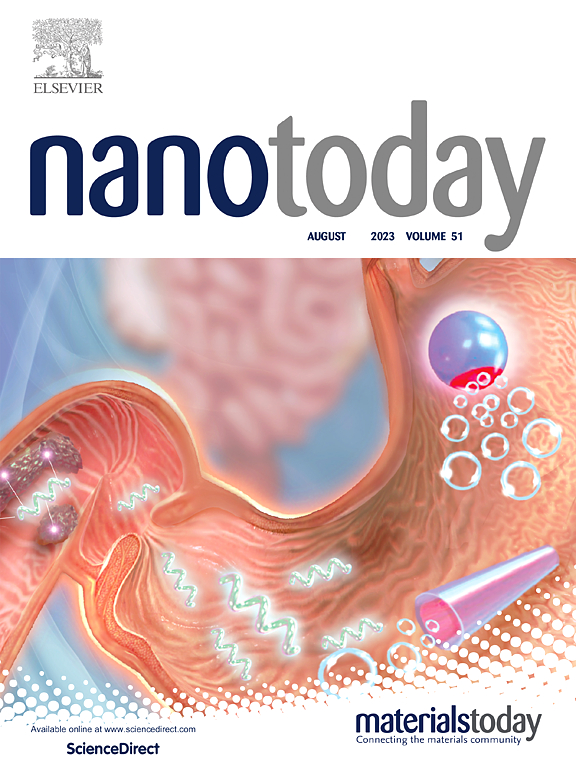Safe-by-design strategies towards bismuth-based nanomaterials in tumor diagnosis and therapy
IF 13.2
1区 材料科学
Q1 CHEMISTRY, MULTIDISCIPLINARY
引用次数: 0
Abstract
The therapeutic nanomaterials (NMs) are receiving increasing attention for simultaneous diagnostic and therapeutic applications. Bismuth (Bi)-based NMs (Bi NMs) show excellent potential for building therapeutic platforms due to their sensitivity to X-ray, semiconducting properties, and unique structures. Bi NMs can be used in computed tomography (CT) imaging, photoacoustic (PA) imaging, and also in the fields of radiotherapy and phototherapy. Bi NMs can be designed in terms of composition, structure and surface modification to achieve the goal of having more patterns in cancer diagnosis and treatment. Despite their great success in the last decades, emerging nanomedicines still lack a complete comprehension regarding their safety issues and the connection among facets of physicochemical properties and safety. This review starts with the mechanism of action of Bi NMs, focusing on the main classes of Bi NMs biological effects and their toxicological mechanisms. And based on this information, principles for the development of safe-by-design nanomaterials for medical applications and recent advances in the field are outlined. These principles can be used as an initial step to direct the formulation of more effective and safer strategies based on Bi nanodrugs.
在肿瘤诊断和治疗中使用铋基纳米材料的安全设计策略
治疗性纳米材料(NMs)在诊断和治疗方面的应用越来越受到关注。铋(Bi)基NMs (Bi NMs)由于其对x射线的敏感性、半导体性质和独特的结构,在构建治疗平台方面表现出优异的潜力。Bi - NMs可用于计算机断层扫描(CT)成像,光声成像(PA),也可用于放射治疗和光疗领域。Bi NMs可以从组成、结构和表面修饰等方面进行设计,以达到在癌症诊断和治疗中具有更多模式的目的。尽管在过去的几十年里取得了巨大的成功,新兴的纳米药物仍然缺乏对其安全性问题的完全理解,以及物理化学性质和安全性之间的联系。本文从Bi NMs的作用机制入手,重点介绍了Bi NMs的主要生物效应类别及其毒理学机制。并根据这些信息,概述了用于医疗应用的安全设计纳米材料的开发原则和该领域的最新进展。这些原则可以作为指导基于Bi纳米药物制定更有效和更安全策略的第一步。
本文章由计算机程序翻译,如有差异,请以英文原文为准。
求助全文
约1分钟内获得全文
求助全文
来源期刊

Nano Today
工程技术-材料科学:综合
CiteScore
21.50
自引率
3.40%
发文量
305
审稿时长
40 days
期刊介绍:
Nano Today is a journal dedicated to publishing influential and innovative work in the field of nanoscience and technology. It covers a wide range of subject areas including biomaterials, materials chemistry, materials science, chemistry, bioengineering, biochemistry, genetics and molecular biology, engineering, and nanotechnology. The journal considers articles that inform readers about the latest research, breakthroughs, and topical issues in these fields. It provides comprehensive coverage through a mixture of peer-reviewed articles, research news, and information on key developments. Nano Today is abstracted and indexed in Science Citation Index, Ei Compendex, Embase, Scopus, and INSPEC.
 求助内容:
求助内容: 应助结果提醒方式:
应助结果提醒方式:


